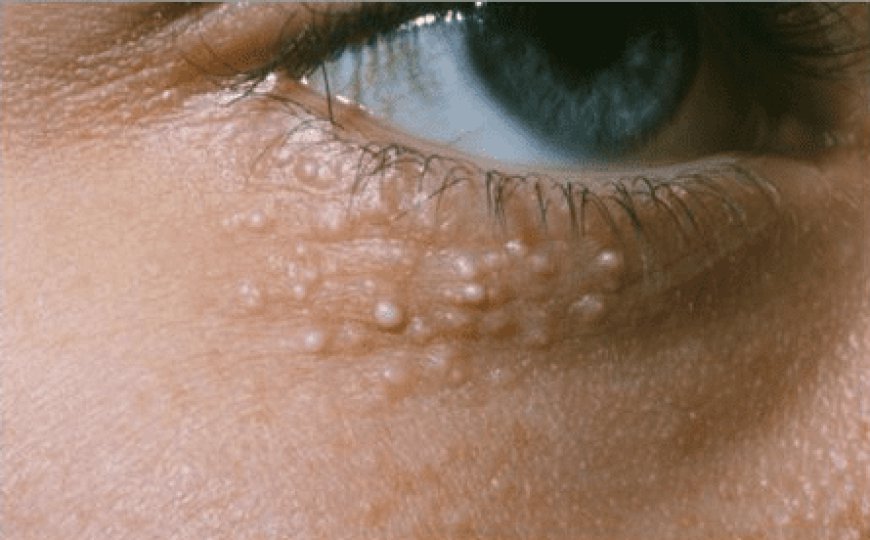Milia are small, white, hard bumps that typically appear on the face, particularly around the eyes and cheeks. They occur when keratin, a protein found in the skin, becomes trapped beneath the surface. While Milia Treatments in Dubai are harmless, many individuals seek effective milia treatments to achieve a smoother, more radiant complexion. Understanding the various options available can help you choose the best method for your skin type and condition.
Understanding Milia
Milia are often confused with whiteheads or acne; however, they are distinct skin issues. Unlike acne, which is caused by clogged pores filled with oil and bacteria, milia form when dead skin cells accumulate and harden. This condition can affect individuals of all ages and skin types, and it can arise due to various factors, including sun damage, use of heavy creams, or even genetics. The appearance of milia can be particularly frustrating, especially if you are striving for clear, radiant skin.
Popular Milia Treatments
When it comes to treating milia, there are several effective methods to consider. These treatments range from professional procedures to at-home remedies. Here, we explore some of the most popular milia treatments that can help you achieve that desired radiant glow.
1. Professional Extraction
One of the most effective ways to remove milia is through professional extraction performed by a dermatologist or licensed aesthetician. During this procedure, a small incision is made in the skin, allowing for the removal of the trapped keratin. This method is quick and usually provides immediate results. After extraction, proper care must be taken to avoid irritation or infection. It’s essential to follow any aftercare instructions provided by the professional to ensure the skin heals properly.
2. Chemical Peels
Chemical peels involve applying a solution that exfoliates the top layer of the skin, promoting cell turnover and helping to prevent the formation of new milia. Depending on the strength of the peel, you may experience some redness or peeling post-treatment, but the results often lead to smoother, clearer skin. Light peels are suitable for all skin types, while deeper peels may require downtime for recovery. Consulting with a dermatologist can help determine the best peel for your needs.
3. Microdermabrasion
Microdermabrasion is a non-invasive treatment that gently exfoliates the skin, removing dead skin cells and promoting new cell growth. This procedure can help prevent the formation of milia while improving overall skin texture and radiance. Regular sessions can enhance skin clarity, making it a popular choice for those looking to maintain a smooth complexion. After the treatment, your skin may feel slightly sensitive, so it’s crucial to use gentle skincare products and avoid sun exposure for a few days.
4. Topical Treatments
For those looking to treat milia at home, various topical treatments can be effective. Products containing retinoids, such as tretinoin, can help speed up cell turnover, preventing dead skin cells from accumulating. Similarly, exfoliating acids like alpha-hydroxy acids (AHAs) and beta-hydroxy acids (BHAs) can assist in sloughing off dead skin and preventing milia. However, it’s essential to introduce these products gradually, as they can cause irritation, especially for those with sensitive skin.
5. Natural Remedies
Several natural remedies can aid in reducing the appearance of milia. Ingredients like aloe vera, honey, and tea tree oil possess anti-inflammatory and antibacterial properties, making them beneficial for skin health. Regularly applying these ingredients can help soothe the skin and promote healing. However, it's crucial to note that while these remedies may help, they might not provide the same results as professional treatments.
Preventing Milia Formation
Preventing milia is just as important as treating them. Adopting a proper skincare routine can significantly reduce the chances of new milia developing. Here are some tips to keep your skin clear and radiant:
1. Exfoliation
Regular exfoliation is key to preventing the buildup of dead skin cells. Incorporate gentle exfoliants into your skincare routine, whether they are chemical exfoliants or physical scrubs. However, be cautious not to over-exfoliate, as this can lead to irritation and worsen skin issues.
2. Sun Protection
Sun exposure can damage the skin and contribute to the development of milia. Always apply sunscreen with broad-spectrum protection daily, even on cloudy days. This step is crucial in maintaining skin health and preventing future skin issues.
3. Use Non-Comedogenic Products
Opt for non-comedogenic skincare and makeup products, as these are formulated to prevent clogged pores. Heavy creams and oils can exacerbate the formation of milia, so choosing lightweight options can help keep your skin clear.
4. Hydration
Keeping your skin well-hydrated is essential for maintaining its health and elasticity. Use a moisturizer suitable for your skin type to help maintain a healthy moisture balance. Hydrated skin is less likely to develop milia and other skin issues.
When to Seek Professional Help
If you find that milia persist despite your best efforts, it may be time to consult a dermatologist. A professional can evaluate your skin, recommend tailored treatments, and ensure that you are using the most effective methods to achieve a radiant glow. Persistent milia may sometimes require more advanced interventions, and a dermatologist can guide you in the right direction.
Conclusion
Achieving a radiant glow is possible with the right milia treatments. Whether you choose professional methods like extraction or chemical peels, or opt for at-home remedies, taking action can help you reclaim smooth, clear skin. Additionally, adopting preventive measures will go a long way in maintaining your skin’s health. Remember, consistency is key in any skincare routine. With patience and the right approach, you can enjoy the radiant complexion you desire.


 laiba5656
laiba5656